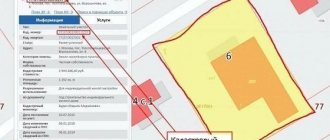Home » Land » Registration
- 1 Legislation
- 2 Who can buy
- 3 Lowest price conditions
- 4 Purposes of acquisition
- 5 Trades
- 6 Ways to obtain land
- 7 List of documents
- 8 Cancellation of a transaction
- 9 individual housing construction
- 10 Grounds for refusal
Increasingly, city dwellers want to move to quieter areas such as villages and villages. Silence, fresh air and the opportunity to garden attract people. From this article you will learn how to buy a plot of land from the district administration.
Legislation
The Land Code of the Russian Federation dated March 1, 2015 states:
- Municipal structures (villages, towns, hamlets) are now the owners of land with the right to sell.
- The execution period is now no more than 3 months.
- It is now possible to buy a plot for individual housing construction from the administration of a city or village only through an auction.
- Bidding is possible for the sale of municipal plots that are not on the road map. registration upon application from citizens.
Following the law, the sale of a plot is possible only if it has undergone cadastral registration. Local authorities are obliged to provide all necessary information about the restrictions on its operation when drawing up a purchase and sale agreement.
Local authorities organize an auction for the sale of land, but there are lands that can be purchased without competition. Such as:
- Territories where public utility or socio-cultural facilities will be located;
- Implementation of important investment projects;
- Owners of buildings on the purchased territory;
- Presence of unfinished structures;
- Citizens of the Russian Federation who are allowed to purchase plots out of turn or first in line in accordance with the law, regulations, etc.
The price for the territory is fixed in the sales contract and determined at auction . If an auction for a land plot is not held, the price for the object will not exceed cad. the cost of the territory being sold. Plots can be provided to citizens or legal entities. persons of other countries, persons without Russian citizenship on the basis of current legislation.
ATTENTION! Land is provided to foreigners on a rental basis.
Registration of land purchase in 2021
Transactions with land plots and country houses are not inferior in popularity to transactions with apartments (we have dedicated a separate article “Purchasing an apartment without a realtor” to a description of the procedure for purchasing residential premises).
In this article, we will consider the procedure for registering a transaction for the purchase of a land plot and real estate objects located on the land, as well as the procedure for registering the transfer of ownership on the basis of a contract for the sale and purchase of a land plot and other objects in Rosreestr.
Step-by-step instructions “How to properly purchase a plot of land and a house without a realtor?”
Step 1.
Selecting a plot of land, a house and checking the legal purity of the property.
The most important step when buying real estate. By carefully checking a plot of land or a house, you reduce the risks of challenging a real estate transaction and reclaiming real estate from your possession.
We have dedicated a separate article to this important step when purchasing real estate, “Checking the legal purity of real estate on the secondary market.” This article discusses the legal aspects of verifying a real estate transaction depending on various circumstances. Only after a thorough inspection of the property is it advisable to proceed to the next paragraphs of these instructions.
We also note that when purchasing a land plot, an additional check is carried out on the restrictions on the use of the land plot, taking into account environmental and other requirements (for this, a special extract from the Unified State Register of Real Estate on the main characteristics of the land plot is ordered). In addition, when purchasing a plot of land with a house, it is necessary to check compliance with the law when building a house (obtaining the necessary permits, whether the unauthorized construction is legalized or not, whether there are opportunities for its legalization, whether building codes have been violated). It is also important to pay attention to the boundaries of the land plot and the survey work carried out. The object of purchase and sale can only be land plots that have undergone state cadastral registration. When concluding a purchase and sale agreement, the seller is obliged to provide the buyer with information available to him about the encumbrances of the land plot and restrictions on its use. Read about the general issues of checking the legal purity of real estate and the specific nuances of checking a land plot or house in the article at the link.
Also, when purchasing an agricultural land plot, you must remember to respect the right of first refusal belonging to the municipality, as well as restrictions on the sale of land shares (shares in the ownership of agricultural land formed through privatization).
Step 2. Choose: advance or deposit. We draw up preliminary agreements with the seller
When the buyer and seller have agreed on the basic terms of the transaction, it is necessary to formalize preliminary agreements, and then proceed to further actions on the transaction. To do this, the parties enter into a preliminary purchase and sale agreement. The essence of this agreement is that the parties secure obligations to conclude a contract for the sale and purchase of a land plot, a house, while this agreement must contain the essential terms of the future contract: the subject of the contract (individual characteristics of the land plot, house: address, cadastral number, category of land, type of permitted use, etc.) and the price of the purchased land plot or house. An important condition of the preliminary agreement is also the deadline for concluding a contract for the sale and purchase of a land plot, a house (DCP of a land plot and a house). If it is not agreed upon by the parties, then by law it is equal to one year from the date of conclusion of the preliminary agreement. If the buyer and seller do not conclude an agreement within the agreed period and neither party offers to conclude this agreement by sending a written proposal to conclude an agreement, then the obligations under the preliminary agreement are terminated. In the preliminary agreement, as security for the fulfillment of the obligation to conclude the main contract, the buyer and seller may provide for the payment of a deposit by the buyer. It is important to know the basic rules about the deposit:
- if the contract is not concluded due to the fault of the buyer who paid the deposit, then the deposit will not be returned to him;
- if the contract is not concluded due to the fault of the seller, the seller returns double the amount of the deposit;
- If the contract cannot be concluded or the parties mutually terminate the preliminary contract, then the deposit is returned.
A “simpler” option to secure preliminary agreements is to make an advance payment. An advance is a sum of money contributed towards future payments. That is, the entire amount of the advance must be counted towards payment of the cost of the property under the contract. If the purchase and sale agreement is not concluded, then the advance payment must be fully returned (regardless of whose fault the agreement was not concluded).
If doubts arise as to the nature of the amount paid, then by law it is generally accepted that this was an advance payment and not a deposit. Therefore, if you decide to secure the agreement with a deposit, then you must directly indicate this in the agreement of the parties.
Please note that since the deposit has a security function, that is, it ensures the fulfillment of obligations under the contract, the deposit cannot be made without any agreement (in particular a preliminary agreement). Money deposited simply by receipt, which does not contain a secured obligation, must be considered an advance.
Step 3. Providing documents for a land plot or house to the bank (when purchasing a plot of land or a house with a mortgage)
After checking the documents for the land plot, the house, and most importantly, checking the documents characterizing the buyer-borrower, the bank makes a decision on approval or disapproval of the loan. If the loan is approved, the bank sends a proposal on the terms of the loan. When the issue of issuing a loan has been resolved, you can move on to the next stage, and at almost every subsequent stage of the process of registering the purchase of a land plot or a house, or a cottage with a land plot, the bank will also participate.
Step 4. Preparation or analysis of the draft contract for the sale and purchase of land and buildings presented by the seller. Coordination of the terms of the transaction, choice of payment method for the cost of the land plot. Request documents for the transaction from the seller.
Before entering into a transaction, the buyer requests the following documents from the seller:
- if a residential building is being purchased, an extract from the house register indicating the persons registered in the residential building (as a rule, the issue of removing all registered persons is resolved before the transaction);
- a certificate confirming the absence of arrears on utility bills; when registering the sale of a land plot in a garden partnership (SNT), DNP, you must obtain a certificate confirming the absence of arrears in contributions to SNT, DNP (the issue of debt repayment is also resolved before the transaction);
- certificates from a psychoneurological and narcological dispensary confirming that the seller is not registered with these institutions (it is better to request certificates with a doctor’s visit, and not just about “failure to register”);
- in some cases (if there are doubts about the adequacy of the seller or if the seller is elderly), we advise you to ask the seller to undergo a medical examination for “sanity” on the day of the transaction.
Before a transaction with a land plot (house), the parties must agree on the terms of the contract, make amendments and prepare documents for signing.
- What conditions must be included in the contract for the sale and purchase of land or a house?
- description of the land plot, house (address, cadastral number, category of land, type of permitted use of the land plot, area);
- the basis for the acquisition of ownership by the seller (details of a purchase and sale agreement, exchange, donation, etc., or a certificate of inheritance, other document, details of a certificate of ownership or extracts from the Unified State Register of Real Estate);
- the seller’s guarantees regarding the absence of liens, other encumbrances, restrictions on ownership, and non-conclusion of a purchase and sale agreement with another person;
- price of land, house, payment procedure and terms, distribution of registration costs;
- the procedure for transferring a plot of land and a house, transferring the risks of accidental death;
- guarantees from the seller regarding the absence of signs of bankruptcy of the seller;
- whether the seller is married, the seller’s obligation to obtain the consent of the spouse; if the seller is married, the land and the house are joint property;
- obligations to repay debts on contributions and utilities;
- the contract for the purchase and sale of a residential building displays the persons retaining the right to reside, the procedure for their vacating the residential building (or it is indicated that there are no registered persons at the time of signing the contract);
- responsibility of the parties.
A contract for the sale and purchase of a residential building, land plot, or other building must be concluded in writing and signed by both parties. The law does not provide for a mandatory notarial form of such an agreement. The exceptions are, in particular, those subject to notarization:
— transactions for the alienation of real estate belonging to a minor or a citizen recognized as having limited legal capacity;
- transactions for the alienation of shares in the right of common ownership of real estate, including the alienation by all participants in shared ownership of their shares under one transaction, with the exception of land shares (shares in the right of common ownership of a land plot of agricultural land provided in the manner of privatization of agricultural land);
— transactions for the alienation of a residential building, if the application and documents for registering the transaction are submitted to the rights registration authority by mail.
A detailed list of transactions subject to notarization is posted in the article “Transactions subject to notarization.” In addition, the parties have the right to have the transaction notarized if they wish. About whether it is necessary to voluntarily certify a land transaction with a notary, what advantages such certification of the transaction provides, and the costs of a notary, also read the article at the link.
The transfer of ownership under an agreement for the purchase and sale of a residential building with a land plot is subject to mandatory state registration (the agreement itself is not registered, it is the transfer of ownership that is registered, in connection with this the agreement comes into force from the moment of its signing, and not registration; consent is also not required buyer's spouse for the purchase of land).
One of the most important issues when drawing up a contract for the purchase and sale of real estate (land, garage, house, plot, etc.) is the choice of payment method. Read a separate article about payment methods for real estate transactions. In this step-by-step instruction, we will analyze the procedure for the methods of payment for real estate recommended by us, and also analyze the procedure for completing a real estate purchase and sale transaction using credit funds.
The last clarification regarding the registration of the purchase of a house and land plot: the law does not allow the alienation of a land plot without a building located on it, if they belong to the same person. Therefore, one of the most important conditions of the contract for the sale and purchase of a land plot with a house is the precise formation of its subject, in which it is necessary to indicate all identification features separately for the house and separately for the land plot.
Step 5. Signing a contract for the sale and purchase of a land plot, house, payment of the cost of the land plot, house (depending on the chosen payment method)
If the transaction is subject to notarization by law or at the request of the parties, then the draft purchase and sale agreement must be agreed upon with the notary, and also provide him with the documents listed above, title documents for the land plot (for a list of title documents depending on the basis for the purchase, see the article on checking the legal purity of real estate), passports of the parties to the transaction, and other documents requested by the notary. After checking the documents, the notary sets the date of the transaction, the contract for the purchase and sale of a land plot, a house is signed by a notary, who certifies the signatures of the parties with his signature and seal. Next, the notary sends documents for registration of property rights, or the parties themselves submit documents for registration to Rosreestr. From 02/01/2019, this service is included in the notary tariff, but the parties must pay a state fee for registration in Rosreestr; after certifying the transaction, the notary is obliged to immediately, but no later than the end of the working day or within the time limits established by the parties to the agreement, submit in electronic form an application for state registration of rights and the documents attached to it to Rosreestr; in exceptional cases, he submits them in paper form within 2 business days, but the parties may refuse to submit documents through a notary. When submitting documents for registration by a notary in electronic form, shortened registration deadlines apply - registration will take only 1 day (if the parties themselves submit documents for registration on the basis of a notarial transaction to Rosreestr, then the period is 3 working days, when submitting through the MFC - 5 working days). After the procedure for concluding a purchase and sale transaction with a notary, the parties perform the following actions to pay the cost of real estate.
If the transaction is not certified by a notary, then, as a rule, the actions of payment and signing of the contract occur simultaneously.
Letter of Credit
When drawing up a contract for the purchase and sale of a land plot, a house with payment through a letter of credit, the parties, as a rule, sign a contract for the purchase and sale of a land plot, a house at the bank in which the letter of credit is issued. To issue a letter of credit, the buyer will need to open a bank account and sign an application for opening a letter of credit. This statement indicates the main formalities: the amount of the letter of credit, the term of the letter of credit (indicated taking into account the registration of the transfer of ownership), the agreement in pursuance of which the letter of credit is opened, a description of the land plot, houses, data of the buyer and seller, the type of letter of credit (a letter of credit can be, in particular, irrevocable or revocable, covered or uncovered, for more information about the differences between types of letters of credit, read the article at the link above; as a rule, an irrevocable covered letter of credit is used for real estate transactions), as well as the basis for receiving funds by the seller (a registered purchase and sale agreement confirming the transfer of ownership of land plot, house), bank details of the seller. Next, the buyer deposits funds into a bank account, upon application for opening a letter of credit, the money is transferred to the bank in which the seller’s account is opened (if the letter of credit is covered), or remains in the correspondent account of the bank that opened the letter of credit (issuing bank), transferred to the seller’s bank (executing bank, executing bank) only after receiving documents on the fulfillment of the terms of the letter of credit (uncovered letter of credit). The procedure is simplified and the time for transferring money is reduced if the buyer and seller have an account opened in the same bank. Read about the completion of mutual settlements under the transaction (receipt of money by the seller under a letter of credit) in paragraph 8 of these step-by-step instructions.
Bank safe deposit box
When paying through a safe deposit box, a transaction with a plot of land or a house, as a rule, is also concluded at the bank where the safe deposit box is rented: the parties sign a purchase and sale agreement, check each other’s documents, and exchange documents. To rent a safe deposit box, a lease agreement is concluded with the bank, which stipulates the conditions for access to the safe deposit box. Such conditions usually include the provision of a registered purchase and sale agreement confirming the transfer of ownership to the buyer. However, additional conditions may be specified (for example, providing an extract from the house register confirming the deregistration of people living in a residential building, if they were not “registered” at the time of the transaction). In addition, it is advisable for the seller to order such a service from the bank as “checking and recalculating funds”; a bank employee on the machine checks the bills for authenticity and also calculates the amounts, then the funds are packed in a sealed bag with the signature and seal of the bank. Next, the seller, buyer and bank employee go to the vault and jointly deposit money into an individual safe deposit box and close it. The keys to the safe deposit box are given to the buyer. Subsequently, the buyer gives the keys to the seller in exchange for the seller’s receipt of money. In practice, the seller and the buyer write a receipt immediately on the transaction (the seller writes a receipt for receiving money, the buyer puts his signature on it in order to later distinguish this receipt from others and avoid replacing the signature on the receipt), the receipt remains with the seller, the buyer retains the keys, after registering the transfer of ownership of the land plot, the parties exchange the house (more on this in paragraph 8).
Mortgage
When purchasing a plot of land or a house using credit funds, as a rule, payments are made through the bank providing the loan. There are several options here:
- the buyer independently transfers the amount of the down payment (own funds) to the seller, and then the bank transfers the credit money after receiving confirmation of payment of own funds.
- the buyer deposits his own funds into the bank account, the bank also credits funds to this account, then the accumulated funds are transferred to the seller’s account.
When using credit funds, the buyer signs a loan agreement with the bank, and the bank also draws up a mortgage agreement. To draw up a mortgage and mortgage agreement, it is necessary to assess the value of the land plot (house), and in most cases it is necessary to order a boundary, technical plan (passport) of the property (such a document may be available from the seller or it will have to be ordered from the organization that carried out the work). measurements of the premises and who produced the technical plan of the premises, boundary plan of the land plot (a copy of the previously prepared plan is issued; this will be cheaper than ordering a plan from a new organization with a visit from a cadastral engineer). Credit money, as a rule, is transferred to the seller after registering the transfer of ownership of the land plot, house to the buyer and registration of real estate pledge in favor of the bank.
The last clarification on this step of the real estate transaction: for banking services you need to pay a commission to the bank. The distribution of the commission between the parties is a contractual issue, each time it is decided individually (one of the parties pays it in half), in general, the issue of additional costs must be discussed in advance with the buyer and their burden distributed, taken into account in the price of the property (such costs include bank commissions, notary fees if necessary, expenses for obtaining documents, legal services when engaging a specialist to complete a transaction, state registration fees).
Step 6. Registration of the transfer of ownership of a land plot or house in Rosreestr
To register the transfer of ownership under a contract for the sale and purchase of a land plot or house, you will need:
- application for registration of transfer of ownership of a land plot, house (filled out in Rosreestr or MFC, signed by two parties - the seller signs an application for registration of transfer of ownership, and the buyer - an application for registration of ownership);
- contract for the purchase and sale of a land plot, a house (original - at least 2 copies, it is advisable to provide the number of copies according to the number of parties to the transaction: one for Rosreestr, the rest for each party to the transaction, so that each party has the original agreement with a mark from Rosreestr; if the agreement was certified notarized, then 1 copy in the original + a copy is submitted, the original is returned after registration, but you can submit an additional copy, in this case in the future it is possible to obtain a copy of the documents from Rosreestr if necessary);
- act of acceptance and transfer of a land plot, a house (the number of copies is determined by analogy with the contract), if the transfer of these real estate objects under the contract occurs before the registration of ownership of the property;
- a notarized statement from the seller’s spouse about consent to conduct a real estate transaction, if a land plot, a house that is in the common joint ownership of the spouses is alienated - original and copy; if the seller is married, but only he has the right of ownership of the real estate, the real estate is not in joint ownership (individual property), then it is necessary to submit a document indicating that the alienated property is not in the joint ownership of the spouses (for example , marriage contract, agreement on the division of the common property of the spouses, a court decision on the division of property and determination of the shares of the spouses (original and copy, court decision - at least 2 copies certified by the court);
- consent of the guardianship and trusteeship authority to the alienation of a residential building in which members of the family of the owner of this residential premises live under guardianship or trusteeship or minor members of the owner’s family left without parental care (which is known to the guardianship and trusteeship authority), if this affects the rights or protected by law the interests of these persons, or if the seller of the land plot or house is a minor or incompetent (original and copy);
- documents confirming the powers of legal representatives, adoptive parents, guardians or trustees (if a minor or incapacitated person is involved in a transaction with a land plot or house) - original and copy;
- written consent of parents, adoptive parents or trustees, if real estate is alienated or acquired by a minor aged 14 to 18 years (original and copy);
- written consent of the mortgagee to the alienation of property, if the land plot, house are pledged and otherwise not provided for in the mortgage agreement (original and copy);
- consent of the rent recipient (if the property is encumbered with rent);
- refusal of other owners of the right of first refusal or confirmation that the seller has notified in writing the remaining participants in shared ownership of his intention to sell his share, indicating the price and other conditions on which he is selling it (application sent by mail with registered notice) (if sold share in common shared ownership of a land plot, house) - original and copy;
- a loan agreement with a bank, a mortgage, if drawn up, and the documents specified in the mortgage as attachments (when purchasing a land plot, a house with a mortgage) - original and copy, and an application for state registration of the mortgage by force of law is submitted from the mortgagee or mortgagor or a statement from both parties when registering a mortgage by virtue of the agreement;
- document confirming payment of the cost of real estate (provided if the contract stipulates that the ownership of the land plot or house remains with the seller until payment of the cost of the real estate) - original and copy;
- title document for the property (the original, which after state registration of the transfer of rights is returned to the seller);
- one of the documents confirming the authority to sign the agreement (if the agreement is signed by a representative) - the original and a copy;
- an extract from the house register confirming the absence of registered persons in the residential building or a list of persons living in the apartment, if they retain the right to use the apartment or undertake to “check out” after registering the transfer of ownership. The need for Rosreestr to obtain information about registered persons in residential premises is determined by paragraph 1 of Article 558 and paragraph 4 of Article 292 of the Civil Code of the Russian Federation. At the same time, this document is not included in the mandatory list of documents, since it is requested by Rosreestr in the order of interdepartmental interaction, however, due to failure to receive information by Rosreestr during the registration period, the process of registering property rights may be suspended. And if during the “suspension” period the information is not received by Rosreestr, then Rosreestr will refuse registration. Therefore, we recommend that you provide this document yourself.
- passport or other identification document of the applicant(s); power of attorney, if documents are submitted by a representative (original and copy);
- if the party to the transaction, the applicant is a legal entity, then it is necessary to submit the constituent documents of the legal entity (with all changes and additions) - the original or a notarized copy, or a copy certified by a person who has the right to act without a power of attorney on behalf of the legal entity, and the seal of the legal entity and a copy. The constituent documents are the charter and the constituent agreement (if any). It is also advisable to provide a certificate of state registration of a legal entity.
- receipt of payment of state duty - original and copy.
Submission of a document confirming payment of the state fee along with the application is not required. The applicant has the right to do this on his own initiative. However, if there is no information about the payment of the state duty in the State Information System on State and Municipal Payments, after five days from the date of submission of the application, Rosreestr will return the application and the documents attached to it without consideration, so we recommend attaching the receipt.
The procedure for registering ownership of an apartment with a mortgage is generally the same as when purchasing a plot of land without using credit funds. However, when registering a mortgage, you will also need to coordinate with the bank the submission by a bank employee of an application for registration of the mortgage (either simultaneously with a general set of documents, or a receipt with the registration case number is provided to the bank for the bank to submit additional documents for this case), provide the documents for registration indicated above in list of documents for mortgage registration.
Amount of state duty for registration of property rights:
For registration of ownership of real estate, individuals pay a state fee of 2,000 rubles, legal entities - 22,000 rubles.
A state fee is charged for registering a mortgage on the basis of a mortgage agreement:
— for individuals — 1,000 rubles;
— for organizations — 4,000 rubles.
By law, no fee is charged for registering a mortgage.
When registering a mortgage, you will also need to agree with the bank on the submission by a bank employee of an application for registration of the mortgage (either simultaneously with a general set of documents, or a receipt with the registration case number is provided to the bank for the bank to submit additional documents to this case).
The application and documents can be submitted in one of the following ways:
- in person (or through a representative by proxy) to a branch of Rosreestr or MFC, including regardless of the location of the property in accordance with the list of divisions that provide reception on an extraterritorial basis posted on the Rosreestr website, as well as to an authorized person of Rosreestr during on-site reception.
In Moscow, documents for state registration are accepted only through the MFC, except for admission on an extraterritorial basis. To register the transfer of ownership of a land plot or a house under a purchase and sale agreement in the Moscow region, in most cases it is also necessary to contact the MFC. - by mail with a declared value upon sending, an inventory of the contents and a notification of delivery;
- in electronic form, including via the Internet through the Unified Portal of State Services and the Rosreestr website.
When sending documents by mail, the authenticity of the signature on the application must be notarized, the transaction with residential premises must be notarized, and a copy of an identification document (passport) must be attached to the application.
When submitting documents for state registration of ownership of an apartment, you must be given (sent) a receipt (notification) of receipt of the documents.
An equally important issue is the timing of registration of the transfer of ownership, which is especially important in alternative transactions.
The period for state registration of rights should not exceed 7 working days from the date of receipt of the application and necessary documents by Rosreestr (9 working days if documents are submitted through the MFC). If registration is carried out on the basis of notarized documents, its period is 3 working days, if documents are received in electronic form - 1 working day, and when applying through the MFC with notarized documents - 5 working days.
The period for state registration begins on the next business day after the date of receipt of documents (Letter of Rosreestr dated August 22, 2017 No. 14-10188-GE/17).
The completed state registration is certified by an extract from the Unified State Register of Real Estate, and Rosreestr also transmits copies of contracts with a mark on the registration.
Step 7. Completion of mutual settlements (depending on the chosen payment method), transfer of house keys and documents
After receiving documents confirming the registration of property rights in Rosreestr, the parties complete mutual settlements depending on the chosen payment method.
Letter of Credit
No further involvement is required from the buyer. Documents justifying the transfer of funds are provided by the seller to the executing bank, which, after checking the documents within a few days, transfers funds from the correspondent bank to the seller’s account.
Bank safe deposit box
The buyer gives the seller the keys to the safe deposit box only in exchange for a handwritten receipt confirming receipt of funds (the receipt must be written in the presence of the buyer or in accordance with the instructions above). It must be remembered that with this payment method, only the seller’s receipt confirms such an important fact as payment of the cost of real estate under the contract. The cell rental agreement is not a payment document and cannot confirm payment of the cost for many reasons. If the buyer does not receive a receipt from the seller for receipt of money, the seller may file a lawsuit to terminate the sales contract and claim the property due to non-payment of the price under the contract. Therefore, it is important to remember these rules for conducting and processing a real estate transaction when using a safe deposit box.
Mortgage
The buyer provides documents confirming registration to the bank providing the loan to transfer funds. The timing of the transfer of funds is specified in the loan agreement and the purchase and sale agreement.
Before or after completion of mutual settlements, the parties, as a rule, inspect the house again (there are various incidents in practice, when, for example, during the registration period the house burns down due to a fire), take meter readings (calculate the seller’s debt if necessary), the seller transfers it to the buyer keys, the parties sign the transfer deed.
Also, when carrying out mutual settlements, it is advisable to obtain from the seller original documents for real estate or their notarized copies (documents that provide the basis for the acquisition of ownership rights by the seller, the previous chain of documents); these documents may be useful in the future in case of legal disputes or when selling real estate.
Step 8.
Don’t forget to apply for a tax deduction for personal income tax in connection with the purchase of a land plot for individual housing construction or a land plot with a residential building and return the tax from the budget
. If you have not previously issued a tax deduction in connection with the purchase of real estate or have not used it in full, then you have the right to register it when purchasing a residential building, a plot of land for individual housing construction or a plot of land with a built residential building and return personal income tax. When completing a purchase and sale transaction of such a plot of land with a mortgage in the future, the owner can apply for a tax deduction for the interest paid to the bank for using the loan. Read more about applying for a tax deduction when purchasing a land plot and purchasing with a mortgage here.
Do you need legal support for a real estate transaction? For an initial consultation and calculation of the cost of services, call us at 8 (495) 223-48-91 or submit a request.
Order
Lowest price conditions
- On the territory given to you for rent for individual housing construction or private plots, build a residential building and operate it. Purchasing a plot of land as personal property will cost 3% of the cad. cost.
- Buying a plot from lease will cost 1.5-3% of the capital. cost for municipal lands or 15-20% for urban ones.
- Win an auction by becoming its organizer, or participate in an auction undertaken by others. The cost of the object will be determined when summing up the results of the bidding competition. The starting price and bidding step are determined by the administration.
- Become the head of a peasant farm. The purchase amount will be determined by the local government depending on the cad. cost.
- If you have received land for agricultural purposes, you are obliged to comply with the conditions of its operation for at least three years.
- Find an unoccupied property that has not undergone cadastral registration, and purchase it at the price of land managers.
Persons who do not have Russian citizenship and foreign companies cannot purchase land from the state , provided that half of their authorized capital (authorized capital is the amount recorded in the constituent documents of the company) does not belong to citizens of the Russian Federation.
In what case can a “cut-in” be issued?
You can apply to increase the plot at the expense of the adjacent territory under the following conditions:
- if the neighboring plot is not burdened with the rights of third parties;
- if the boundaries of the site are broken and it is necessary to give the correct geometric shape and uniform size;
- if a cadastral error has been made in the area of the plot and it is necessary to correct it by restoring the original size;
- if it is impossible to form a full-fledged section from a cut piece.
During cadastral work, it is often discovered that the actual area of land used is much larger than indicated in the certificate of ownership. Such surpluses can be officially registered as property, based on the federal law “On Cadastral Activities”, Article 39.29. During the initial survey, you can increase the plot by 10% of the original area for free
However, as practice shows, state registrars allow for registration areas increased by no more than 5% of the total area. This is considered an acceptable error when carrying out cadastral work. If the site has already been demarcated, but the owner intends to expand its boundaries, an addition of no more than 5% of the main territory can also be arranged free of charge. A new boundary plan must be prepared for the formed land plot for subsequent registration.
Bargaining
To participate in public auctions, you must draw up an application for the provision of a plot, indicating its location, and also indicate the purpose of acquiring the territory you are interested in.
If there are no other applicants for the territory specified in your application, it will be transferred to you at the initial cost.
If there is at least one more person willing to receive your plot, you must be prepared for the fact that the price may rise significantly, otherwise you will lose the auction. The winner of the auction is the person who managed to offer the highest value for the given territory.
The winner is given a plot of land to rent for a certain period to build a house. The result of the auction is recorded in the protocol with the signatures of the organizers and the winner.
The organizers set the day of the week, place and exact time of the auction. Notices of the event are published in local paper and electronic media, strictly 30 days before the start of trading.
ATTENTION! Applications from participants are closed 5 days before the auction date. The event organizer may refuse to hold the auction, in which case he notifies all bidders 15 days before the appointed date, within a period of up to 3 days.
Construction with violations
As often happens, the house is first built, then registered. This approach not only does not comply with the established registration procedure, but may even become a reason for refusal to register ownership of the object. Recently, one of the clients of the Pravozem agency found itself in a similar situation.
In September, a resident of the Istrinsky district approached us with a request to register an already built private house. To do this, the lawyer sent a notification about the planned construction to the local administration, waited for a response notification about the approval of construction and began to draw up a technical plan for the house.
The engineer measured the house, drew up a diagram and put it on a map of the area. It turned out that the boundaries of the customer’s house were outside the boundaries of his site, occupying the territory in front of the road. Before registering such a house, it is necessary to tidy up the boundaries of the site. The engineer proposed to design the captured piece as a cutting. To do this, he carried out a contour survey of the site and drew up a diagram of its location on the map-plan of the territory. The diagram was attached to the application for the purchase of land and sent to the administration. After the administration approved the scheme, the engineer carried out land surveying with cuttings. After which the house was registered in the cadastral register and the ownership was registered.
Ways to obtain land
The following can obtain territory without participating in an auction or in a simplified manner:
- Beneficiaries (citizens living in dilapidated houses or houses in disrepair, WWII participants, internationalist soldiers, people with disabilities, large families (3 children or more) and other categories of citizens).
- Legal entities . If the company plans to build objects important to society, for example, healthcare institutions, roads or industrial facilities.
- Employees of budgetary institutions and/or organizations in rural areas.
- Manufacturers of agricultural products , if they rent the site for more than 3 years.
When can and cannot be performed?
You can legalize ownership of a plot of land for free:
- if a house was built on it and it was received free of charge (by disabled people, large families, etc.);
- is in lifelong inheritable ownership;
- has actually been in use for at least 15 years;
- has an agricultural purpose, for subsidiary farming (more details about the privatization of agricultural land are written here);
- is part of a non-profit association.
There are a number of lands that do not fall under the rules of free privatization (clauses 4, 5 of Article 27 of the Land Code of the Russian Federation):
- reserves withdrawn from civil circulation, for example;
- limited from circulation: intended for municipal and state use, forest areas, etc.
About which categories of land are not subject to either free or paid privatization is written in a separate publication.
List of documents
First of all, you must draw up and submit applications for state registration. registration of land rights .
The application must indicate how you plan to use the land property, the area you plan to occupy and the location, and the legal status of the site.
The village council will consider your application within the specified period. Within a period of up to 10 working days, the village council will make a decision on granting or refusing you a plot.
Local residents can receive land on preferential terms, on a first-come, first-served basis. The cost of a plot often depends on how it will be used by the owner and location. For preferential purchase the following documents are required:
- Passport.
- A document proving membership in a preferential category of citizens.
- Consent of the guardianship authorities if the family has many children.
- Certificate of work experience for military personnel and police officers.
- Documents of the structure built on the site.
- Boundary documents (i.e. documents defining the boundaries and process of registration of a land plot on the ground) for the site. Surveying is not mandatory.
- Cadastral documents.
For purchase without benefits, the list of documents below may differ:
- A written, signed statement.
- Passport.
- Cadastral passport.
- Documents for the land itself and the buildings on it.
- Additional documents confirming the right to purchase.
To purchase property, a purchase and sale agreement is drawn up in 3 copies.
IMPORTANT! Samples of purchase and sale agreements differ depending on the objects located on the site or their absence.
How necessary is this?
Let's consider whether it is necessary to privatize a plot if a house is built on it.
Reference! The legislation does not force the privatization of the land on which a residential building is located. The procedure is voluntary and it has its positive and negative sides.
The advantages are how you can manage the land if it has been privatized and is already owned:
- carry out transactions, give gifts, leave inheritances;
- the owner erects useful extensions on it at his own discretion;
- investors cannot occupy the territory adjacent to the house.
The disadvantage will be the annual assessment of property tax , the amount of which depends on the cadastral value. For many, paying this amount has a negative impact on the budget.
individual housing construction
Instructions for purchasing a plot for individual housing construction:
- Drawing up an application that indicates the purpose of the acquisition (for individual housing construction), what area and location you want.
- Next, the application for refusal or grant is considered.
- If you live in this region\village\town\village, your right to receive land is a priority.
- If you do not have the opportunity and/or desire to wait in line, you are allowed to buy it
- The final results of the decision of the cadres. The services provide you with land property at your complete disposal.
Refusal to redistribute
You can redistribute land intended for individual housing construction, private household plots, gardening and vegetable gardening.
In this case, the plots must be adjacent, belong to the same category and have the same purpose (type of permitted use). The area of the newly formed site cannot exceed the maximum size established by the rules of land use and development for a specific territorial zone. Surveyors and cadastral engineers of the Pravozem Academy of Sciences will conduct a contour survey of the site and draw up a diagram of its location on the map plan of the territory. The layout of the newly formed site will be approved by the local administration, a boundary plan will be developed and ownership will be registered in Rosreestr. They will increase the construction site if the house was built with violations and goes beyond the red line.









